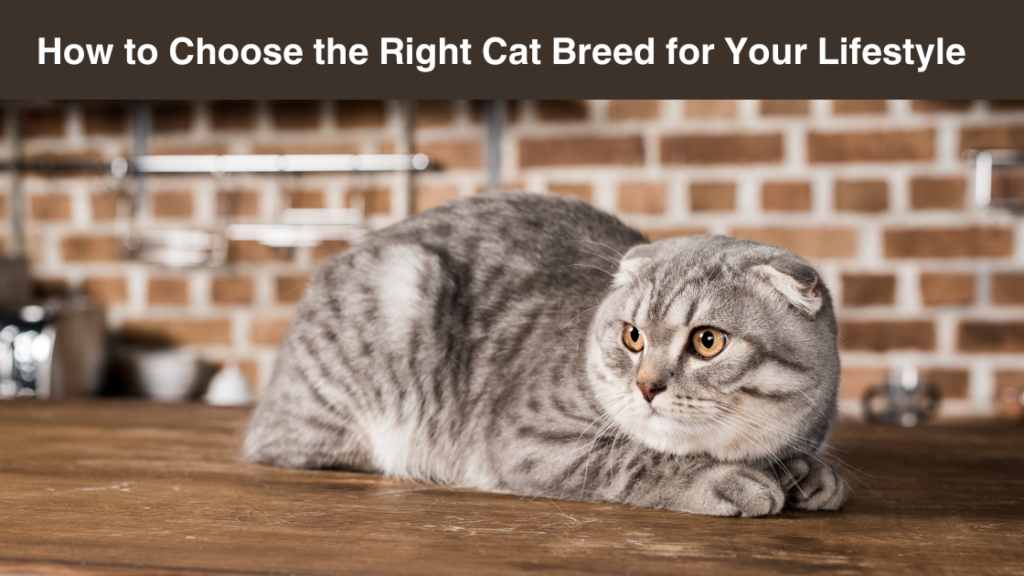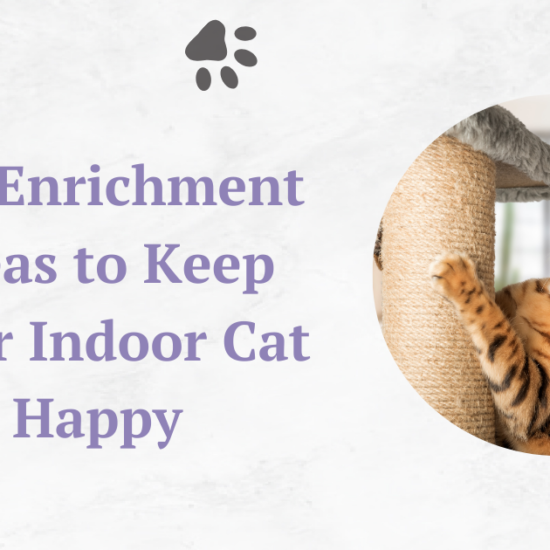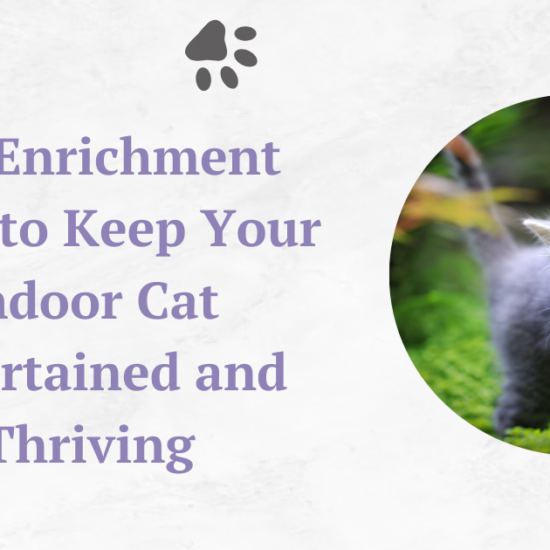Cats have been our constant companions for thousands of years, and for good reasons. They are among the most popular pets in the world, noted for their independence while being friendly.
Table of Contents
Introduction
Whether you’re a first-time cat owner or thinking about adding a new feline member to your family, choosing the correct cat breed for your lifestyle is critical. Different breeds have different personalities, care needs, and energy levels, which can have a big impact on how well they fit into your life.
In this comprehensive article, we’ll look at the intriguing world of cat breeds, their distinguishing qualities, and how to choose the right cat breed for you. We’ll take into account aspects like activity level, grooming requirements, and temperament to help you make an informed decision and maintain a happy, harmonious relationship with your new feline companion.
Understanding the Basics of Cat Breeds
Cats, our cherished companions for thousands of years, come in a wide range of breeds, each with its own set of qualities and characteristics. This variety is the result of decades of careful breeding to emphasize specific characteristics such as coat style, color, size, and temperament. Cats, like dogs, are classified into several breeds, each with its own specific characteristics, making the selection of a feline partner an intriguing and personal undertaking.
In this analysis of the basics of cat breeds, we’ll look at how cats are classified and identify the key differences between them. This knowledge is useful in making an informed decision when choosing the right cat breed for your lifestyle.
- Cats of Purebred Origin

Purebred cats are the feline equivalent of royalty. These majestic creatures are the result of generations of meticulous breeding to achieve precise breed requirements. As a result, they frequently exhibit predictable traits and qualities that adhere to the established norms of the breed. Siamese cats, for example, are known for their beautiful blue almond-shaped eyes, while Persian cats have long, luxuriant fur and a peaceful disposition. The magnificent Maine Coon, on the other hand, stands out for its enormous stature, tufted ears, and gregarious personality. These cats are often associated with breed-specific characteristics, and their pedigree is well documented.
- Domestic Longhair and Shorthair Cats
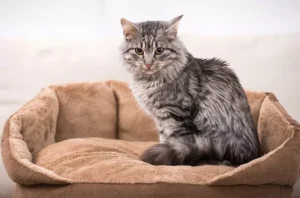
Domestic shorthair and longhair cats, unlike purebred cats, do not comply with certain breed requirements. These cats are the beautiful product of Mother Nature’s artistry, combining numerous breeds and their distinct characteristics. Domestic shorthairs can have coats of varied colors and patterns, but domestic longhairs can have a variety of fur lengths and are frequently a combination of breeds. What they lack in pedigree, they make up for in originality, diversity, and adaptability. These cats are known for their resilient and easygoing personalities, making them ideal companions for households looking for a cat that has it all.
- Crossbred Cats

Hybrid cats provide an insight into the wild side of feline breeding. These fascinating creatures are the result of combining domestic cats with their wild cousins, such as the Bengal, which carries Asian leopard cat traits. Hybrid cats have different appearances and mannerisms that typically resemble those of their wild predecessors. Bengals, for example, have beautifully marked coats that resemble those of their wild forebears and are lively and playful. The Savannah, serval cat crossed with a domestic cat, is recognized for its exotic appearance and energetic attitude.
- Cats of Distinction
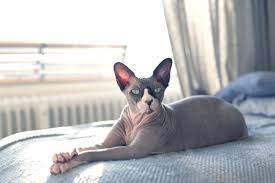
Specialty cats are the outliers of the feline world, with distinct physical traits that distinguish them from other breeds. The Sphynx, a beautiful hairless breed, is an excellent example of a specialist cat. Despite their lack of fur, Sphynx cats have an extremely charming personality. They are known for being curious and affectionate. Sphynx cats are prized for their unusual appearance and warm, cuddly temperament, enticing individuals who enjoy the unusual.
Personal preferences ultimately determine whether you acquire a purebred or mixed-breed cat. Each cat breed delivers its own set of pleasures and rewards. Some people like the beauty and dependability of purebred cats, while others enjoy the unique and individualistic appeal of mixed-breed cats. Understanding these broad kinds of cat breeds is the first step in the enjoyable process of choosing the right cat for your individual lifestyle. Whatever you decide, the friendship you develop with your furry pet will be cherished and long-lasting.
Evaluating Your Lifestyle
Choosing the right cat breed is much more than just selecting a cute or exotic-looking feline; it’s about finding a companion who fits your lifestyle and provides you joy every day. Assessing your lifestyle is an important part of this decision-making process on how to choose the right cat breed. It ensures that your new feline companion is a suitable fit for you and your family. Here are some important lifestyle factors to consider while choosing the best cat breed:
- Level of Activity
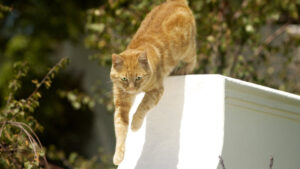
Consider your own level of exercise and preferences. Do you prefer outdoor activities, energetic pursuits, and regular exercise, or do you prefer a more relaxed, indoor-oriented lifestyle? Cat breeds, like people, have variable energy levels. Some cats, like the Siamese and Bengal, are extremely active and require a lot of playtime to keep them happy and healthy. Breeds like the Persian and Ragdoll, on the other hand, prefer a peaceful indoor environment. It is critical to match your activity level with that of your future feline partner for both your enjoyment and the cat’s well-being.
- Living Area
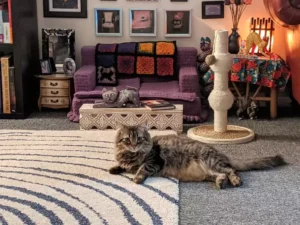
Another important element to consider is the living environment you provide for your cat. Do you live in a large house with plenty of space or in a small apartment with restricted space? The amount of room available can have a big impact on your cat’s comfort and exercise chances. Larger, more energetic breeds, such as Maine Coons or Abyssinians, frequently flourish in larger, more open habitats that allow them to participate in stimulating activities. Smaller living quarters, on the other hand, may be appropriate for less active breeds or senior cats who are comfortable with indoor existence.
- Allergies
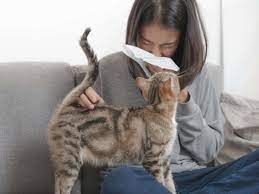
Consider any allergies in your family. Allergies can be a major issue when it comes to how to choose the right cat breed. While no cat is completely allergy-free, certain breeds are thought to be more allergy-friendly than others. Breeds with lower shedding and fewer allergenic proteins in their saliva or dander, such as the Russian Blue or the Sphynx, may be better suited to allergy sufferers. Regular grooming and keeping a clean living environment can also aid in the reduction of allergic reactions.
- Domestic Situation
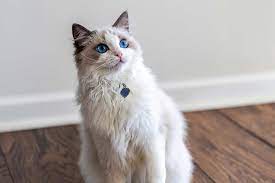
If you have children or other pets in your home, you must select a cat breed with a temperament that is appropriate for a family setting. Some breeds, such as the Maine Coon and the Ragdoll, are known for their patience and gentle nature, making them ideal for families with children. Others, such as the Bengal, may necessitate additional supervision due to their active and playful nature. The compatibility of your cat with existing family members is critical for creating a harmonious and safe environment.
- Work Timetable

Consider your work schedule and the frequency with which you are away from home. Cats vary in their independence, so it’s critical to choose a breed that fits into your daily routine. Scottish Fold and British Shorthair cats are more independent and can tolerate longer periods alone. Highly social breeds, such as the Siamese or Burmese, may become distressed if left alone for extended periods of time. It is critical for your cat’s well-being to ensure that his or her requirements for companionship and connection coincide with your work schedule.
- Grooming and Maintenance
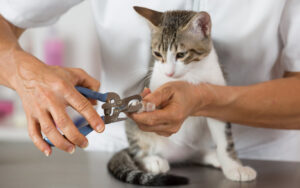
Are you willing to devote time and effort to grooming your cat? Some breeds have high grooming requirements, while others are low-maintenance. Long haired breeds like the Persian or the Maine Coon require regular brushing to prevent matting and preserve their coats. In contrast, short haired breeds like the American Shorthair or the Bombay have few grooming requirements. The time and energy you’re prepared to commit to grooming can impact your choice of breed.
Now that you’ve examined your lifestyle, it’s time to explore various cat breeds and how they connect with your daily life.
Choosing the Right Cat Breed
The optimal cat breed for you will depend on how well their qualities and requirements complement your lifestyle. Here is a complete description of different cat breeds, their personalities, care needs, and how they fit into diverse lifestyles:
- Ragdoll
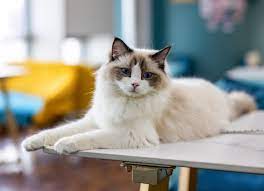
Personality: Ragdolls are recognized for their gentle and submissive demeanor. They’re affectionate, generally wanting human interaction, and they have a penchant for turning limp when picked up, hence the name.
Activity Level: These cats are normally laid-back and not particularly active. They like to relax and be pampered.
Grooming and Care: Because Ragdolls have semi-long fur, regular grooming is required to prevent matting.
Family Friendly: Ragdolls make wonderful family cats since they are gentle with children and other pets.
Living Environment: They thrive in both apartments and houses.
Allergies: Some allergy sufferers prefer Ragdolls because of their low shedding.
- Siamese Cat
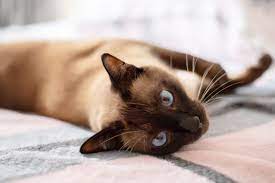
Personality: Siamese cats are very vocal, gregarious, and affectionate. They have a lot of fun engaging with their human friends.
Activity Level: Siamese cats are extremely energetic and require a great deal of mental and physical activity.
Grooming and Care: Because of their short coat, they require less care.
Family Friendly: Siamese cats can be wonderful with families, but their high energy level may be too much for young children.
Living Space: They thrive in larger homes with plenty of room to run around.
- Coon of Maine
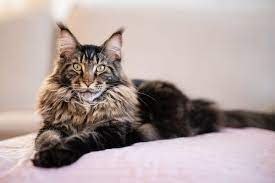
Characteristics: Maine Coons are friendly and social giants. They are commonly referred to as “gentle giants” because of their playful and friendly attitude.
Activity Level: They are lively cats who enjoy playing and going on excursions outside.
Grooming and Care: Maine Coons have long, luxuriant fur that must be groomed on a regular basis.
Family Friendly: They are ideal for families because of their pleasant and gentle demeanor, making them perfect for youngsters.
Living Space: Given their size and activity level, larger homes are excellent for Maine Coons.
Allergies: Maine Coons are not hypoallergenic.
- Persian

Personality: Persian cats are reserved, peaceful, and quiet. They are well-known for their kind and caring nature.
Activity Level: They love resting in a peaceful setting and have a low activity level.
Grooming and Care: Persian cats’ long, dense fur necessitates extensive grooming.
Family Friendly: Their tranquil demeanor makes them ideal for families, particularly those who prefer a quieter lifestyle.
Living Space: Persians thrive in modest apartments and houses.
Allergies: They are not thought to be hypoallergenic.
Note: There might be affiliate links mentioned here. We may receive a commission if you purchase a product through an affiliate link. There is no additional charge for you. Please do your own research before making any online purchases.
- Bengal

Characteristics: Bengals are lively and playful. They have a wild appearance and like playing with others.
Activity Level: Bengals are extremely active and demand a lot of playing as well as cerebral stimulation.
Grooming and Care: Their short coat requires little maintenance.
Family Friendly: Bengals are a fantastic choice for families, but their energy level may be too high for very small children.
Living Space: They thrive in larger houses with plenty of room for play and exploration.
Allergies: Bengals do not have hypoallergenic properties.
- Scottish Fold
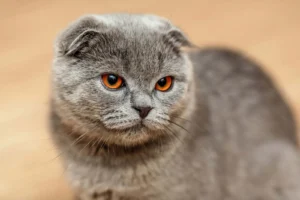
Characteristics: Scottish Folds are noted for their distinctive folded ears and pleasant, easy going demeanor.
Activity Level: They are moderately active and love playtime, but they are also satisfied resting.
Grooming and Care: Their short to medium coat requires little upkeep.
Family-Friendly: Scottish Folds make excellent family dogs, particularly in households with older children.
Living Space: They are versatile and may live in a variety of settings.
Allergies: They are not thought to be hypoallergenic.
- Sphynx
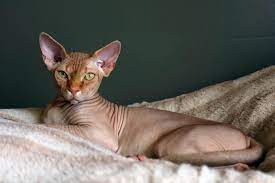
Personality: Sphynx cats are noted for their hairless appearance as well as their inquisitive, sociable, and extroverted personality.
Activity Level: They are physically active and like playing and exploring.
Grooming and Care: Despite popular belief, Sphynx cats require regular bathing to maintain skin health.
Family Friendly: They are appropriate for families who are not turned off by their unconventional appearance.
Living Space: They adapt well to a variety of living environments.
Allergies: Due to their lack of fur, Sphynx cats may be a better choice for people who suffer from allergies.
- Russian Blue
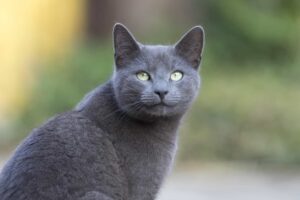
Characteristics: Russian Blues are noted for their exquisite beauty and reserved but friendly personality.
Activity Level: They are physically active and like participatory play.
Grooming and Care: Because of their short, dense coat, they require little care.
Family Friendly: They can be ideal for families who prefer a more peaceful existence.
Living Environment: Russian Blues thrive in apartments and houses.
Allergies: Because of their lesser shedding, they may be healthier for people who suffer from allergies.
- Abyssinians
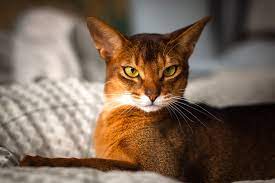
Personality: Abyssinians are lively, playful, and inquisitive cats. They like to be challenged mentally and physically.
Activity Level: They are very energetic and require a lot of exercise and play.
Grooming and Care: Their short coat requires little maintenance.
Family Friendly: Abyssinians can be good for families, although they can be too energetic for very young children.
Living Space: They thrive in homes with plenty of room to run and play.
Allergies: Abyssinians do not have hypoallergenic properties.
- Burmese
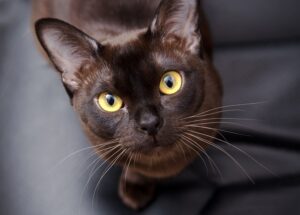
Characteristics: Burmese cats are friendly and outgoing, and they like connecting with their human friends.
Level of Activity: They are moderately active and enjoy interactive play.
Grooming and Care: Because of their short coat, they require less care.
Family-Friendly: Burmese cats are ideal for households with children.
Living Space: They adapt well to a variety of living environments.
Allergies: They are not thought to be hypoallergenic.
Making the Best Decision
Choosing the right cat breed is an important decision that can provide years of friendship and joy. This decision, however, should be made after careful consideration of your lifestyle, preferences, and the unique characteristics of various cat breeds. Here are some extra ideas to assist your quest of how to choose the right cat breed and ensure you make an informed and responsible decision:

Visit Shelters: Visiting local animal shelters and rescue organizations is one of the most rewarding ways to find your new feline friend. Countless cats in need of loving homes are frequently housed in shelters. These cats come from all walks of life and can be extremely affectionate and grateful companions. Many mixed-breed cats can be found in shelters and can be an excellent fit for a variety of lifestyles. Don’t underestimate the allure of a shelter cat; they have their own distinct beauty.

Talk to Breeders: If you determine that a specific purebred cat is the ideal fit for you, it’s critical to connect with responsible breeders who emphasize their cats’ health and well-being. Responsible breeders follow ethical breeding procedures and are concerned with the wellbeing of their feline friends. When speaking with breeders, inquire about the breed’s specific traits and characteristics, as well as any potential health issues associated with the breed. A reputable breeder will inform you about the cat’s ancestry, medical history, and any required vaccinations or health clearances.
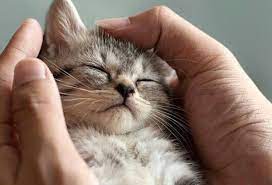
Spend Time with the Cat: Before making a final decision, spend as much time as possible with a cat. Visit breeders, shelters, or foster homes to discover if the cat’s personality matches yours. Interacting with a cat in person can help you determine its temperament, energy level, and compatibility with your family. It’s a chance to watch their behavior and form an initial relationship.

Consider Adoption: Adopting a cat is a wonderful experience. By giving a loving home to a needy cat, you not only gain a loyal companion but also contribute to animal welfare. Shelter cats, regardless of breed, can provide unconditional love and gratitude. When you rescue a cat, you form a special bond with them because you know you’ve given them a second chance at happiness.
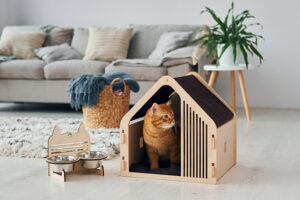
Prepare Your Home: Before bringing your new cat home, ensure that your living space is cat-friendly. Remove potential hazards that might harm your pet, such as toxic plants, chemicals, or small objects they might swallow. Provide essential supplies like litter boxes, scratching posts, toys, and cozy resting spots. Making your home safe and comfortable for your new cat will help them adjust and feel at peace in their new surroundings.

See a Veterinarian: All cats, regardless of breed, require regular veterinary care. Consult a veterinarian to ensure that you are completely equipped to meet your cat’s healthcare needs. Discuss immunization regimens, preventive care, and any health risks specific to the breed you select. Keeping your cat healthy and happy is a lifelong responsibility.
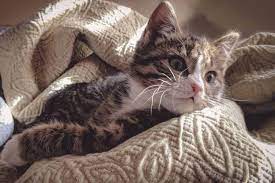
Patience and Commitment: Cats can live for 15 years or more, so be prepared to make a long-term commitment if you get a cat. It may take some time to form a deep bond with your cat, so be patient and persistent in your care and attention. You’ll develop a strong bond with your feline partner over time, one filled with love, trust, and innumerable cherished memories.
FAQs
What are the essential elements to consider when choosing a cat breed for my lifestyle?
You should consider aspects including your activity level, dwelling space, allergies, family status, job schedule, and grooming and maintenance preferences when choosing the right cat. These elements will help you pick a cat that fits nicely into your daily life.
What is the distinction between purebred cats and mixed-breed cats?
Purebred cats are the result of selective breeding for specific breed standards, and their characteristics are frequently predictable. Mixed-breed cats lack breed criteria and exhibit a wide range of features dependent on their ancestors.
Are hybrid cats suitable for households?
Hybrid cats are the offspring of domestic cats and wild cat species, and they can have distinct appearances and behaviors. They may be appropriate for some households, but their unique demands and traits must be carefully examined.
Which cat breeds are thought to be hypoallergenic?
While no cat is completely allergy-free, certain breeds are thought to be more allergy-friendly than others. Because of their decreased shedding and allergenic protein levels, breeds like the Russian Blue and Sphynx may cause fewer allergic reactions in some people.
After adopting or acquiring a cat, how can I ensure its health and well-being?
All cats require regular veterinary care. Consult a veterinarian to ensure that you are completely equipped to meet your cat’s healthcare needs. Discuss immunization regimens, preventive care, and any health risks specific to the breed you select.
Is it preferable to adopt a cat from a shelter or to buy one from a breeder?
Both options have advantages. Adopting a shelter cat ensures a loving home for a cat in need, regardless of breed. Buying from a reputable breeder can provide greater certainty in terms of breed features and ancestry. The decision is based on your preferences and priorities.
Before adopting or acquiring a cat, how can I know if its personality matches my expectations?
Spend as much time as possible with the cat before making a final decision. Interact with the cat at breeders, shelters, or foster homes to assess its temperament, energy level, and suitability for your family.
Can I give a caring home to an allergic cat in my household?
Yes, hypoallergenic cat breeds such as the Sphynx and Russian Blue may be a better option for households with allergy sufferers. Regular grooming and keeping a clean living environment can also aid in the reduction of allergic reactions.
Is a huge living space required to accommodate specific cat breeds?
The breed’s level of activity determines how much space a cat needs. Larger living spaces may suit more active breeds, such as Maine Coons, although less active breeds, such as Persians, can adapt well to smaller homes or apartments.
How long should I expect a cat to live, and what is the time commitment?
Cats can live for up to 15 years, so be prepared to make a long-term commitment. It may take some time to form a deep bond with your cat, so be patient and persistent in your care and attention. You’ll develop a strong and lasting bond with your feline buddy over time.
Conclusion
Choosing the best cat breed for your lifestyle is a big decision that will have a big impact on both your life and the life of your new feline buddy. When making this decision on how to choose the right cat breed, consider your daily routine, living situation, and personal preferences. Remember that all cats, regardless of breed, deserve love, care, and a forever home, so make your decision with the intention of giving your new pet the best life possible. Whether you choose a purebred or a mixed-breed cat, it will definitely provide you with a lifetime of love, joy, and companionship.


